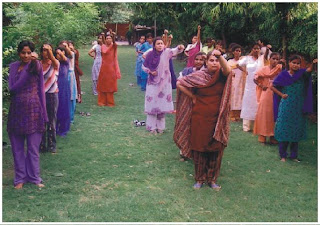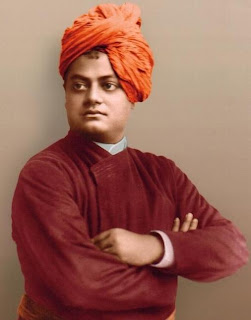CONSTITUTIONAL RIGHTS OF WOMEN IN INDIA

If the principle of gender equality is enshrined in the Indian Constitution, then why are Indian women treated as second citizens in their own country? The Constitution officially grants equality to women and also empowers the State to adopt measures of positive discrimination in favour of women. However, the varied forms of discrimination that women in
It is claimed that from the Fifth Five Year Plan (1974-78) onwards, there has been a marked shift in the approach to women’s issues from welfare to development. Where is the development? Yes, the status of the urban woman has shown some improvement but the changes in their lifestyle were not coupled by changes in the general mindset of the people in our patriarchal society. Thus, some laws should have been framed for the protection of the newly emancipated and urbanized Indian women. What is the percentage of urban women in
The National Commission for Women was set up by an Act of Parliament in 1990 to safeguard the rights and legal entitlements of women. “The 73rd and 74th Amendments (1993) to the Constitution of India have provided for reservation of seats in the local bodies of Panchayats and Municipalities for women, laying a strong foundation for their participation in decision making at the local levels.” These reserved seats often go unoccupied or are taken up by male candidates because women rarely contest for such seats. Why? The mere existence of laws cannot automatically bring about a revolutionary change in the society. In a country where women have no control over their own lives and do not even have the decision-making power in their own household, do you think they will be encouraged to join local governing bodies?
In
The following are some of the provisions made in favour of women, in our constitution:
Article 14 in the Indian Constitution ensures equality in political, economic and social spheres. Article 16 provides for equality of opportunities in matters of public appointment for all citizens. However, the ratio of women in Politics is far less as compared to men. How many women hold positions of power in government run institutions? Single women do not get jobs easily because the employers fear that they might get married and quit. They also find it hard to get rented accommodation whereas that is not the case with single men. Cricket is a religion in
Article 15 prohibits discrimination against any citizen on the grounds of religion, race, caste, sex etc. There are certain places of worship in
Article 15 (3) of the Indian Constitution allows the State to make any special provision for women and children. Wife bashing is a favorite sport in
Article 39(a) mentions that the State will direct its policies towards securing all citizens, men and women, the right to means of livelihood while Article 39 (c) ensures equal pay for equal work. When a male government employee is transferred from one place to another, is his wife given a new job in the new place? Her career goals are of little importance to anyone. She can be displaced and uprooted anytime! The daily wages of women labourers in
Article 42 directs the State to ensure just and humane working conditions. More often than not, women are exploited by their bosses. It is believed that women who keep their bosses happy get promotions very easily in the Corporate world! What about the others? Male colleagues never fail to make passes at women. Women have to put up with their bawdy jokes, lascivious remarks and glares, all the time. The plight of women labourers at construction sites, tea and rubber plantations etc, cannot even be described.
The constitution imposes a fundamental duty on every citizen through Article 15 (A) (e) to renounce practices derogatory to the dignity of women. What is the government doing about eve-teasing? Can a woman spend an entire day on the streets of the National capital without getting a series of comments, derogatory to her dignity? Another law that protects women against a seemingly milder crime is Section 509 of the IPC. This law punishes individuals who have insulted the modesty of a woman. Offensive language, sounds, gestures and intrusion of a woman's privacy are punishable under this law. Outraging the modesty of a woman is also punishable under Section 354 of the IPC. Under this law, an individual who has assaulted a woman, used criminal force on her or outraged her modesty in any other way can be punished with imprisonment of up to 2 years. In fact the people who are employed by the State to ensure that people don’t flout any rules, the policemen, are the ones who have given consequence to many crimes against women. Policemen are often found mouthing obscenities, glaring and passing bawdy remarks on women, not only on the roads, but also inside the police station. Many of our honourable politicians are also involved in all manner of crimes against women.
Laws such as the Immoral Traffic (Prevention) Act, Sati Prevention Act, Dowry Prohibition Act and Indecent Representation of Women (Prevention) Act protect women from the more "traditional" crimes such as rape, abduction, dowry, torture, molestation, sexual harassment and selling of girls into slavery. However trafficking of women is still very common in this poverty-stricken country. Women from economically backward families are kidnapped and forced into prostitution. Incidents of women being charred to death after their husbands’ death, have been reported recently. Giving and taking dowry is officially, a crime but the practice goes on. In fact, it is taken for granted that if you want to get your daughter married you should arrange for her dowry first, even when your daughter is educated and financially independent.
Female foeticide and infanticide are common practices in this country. If at all the girl is allowed to live, she is subject to all forms of torture in her own house. She is not allowed to go to school, instead she is forced to take up menial jobs and married off almost as soon as she enters teenage. People in rural areas fear that their daughters might be raped so it is better to get them married. Ironically, The Child Marriage Restraint Act specifies the cut-off age for marriage as 18 years, protecting women from child marriage. Women, be it urban or rural, face all forms of sexual harassment throughout their lives. So what is the use of these laws?
There are many women in
Thus, there are a number of laws to protect women, but what is the use of having these laws when no one follows them? In fact, the people whose business it is, to enforce these laws are the ones who publicly flout them. Besides, not many women are conversant with law and few are aware of the rights and privileges accorded to them by the constitution. So they suffer all forms of discrimination, passively.
References:
Ø http://wcd.nic.in/empwomen.htm
Ø specials.msn.co.in/sp08/wmday/women_rights.asp

I very much agrre with you.Today we have women at all the topmost designation but that doesn't signify the improvement of women's condition in the society.Women are just thought to be the commodity who can be used by anyone at each and every phase of their life. Your article is very informative and eye opener to all. Keep up the gud work.
ReplyDelete